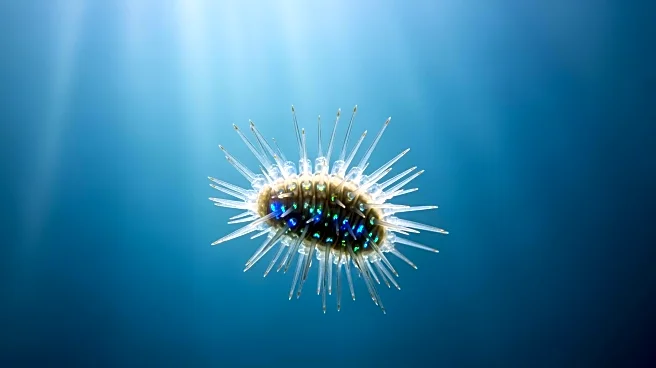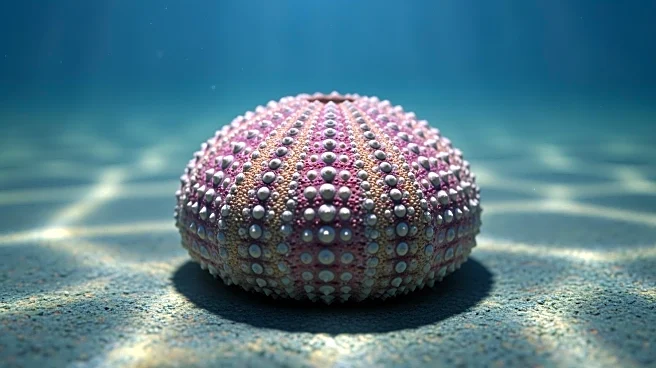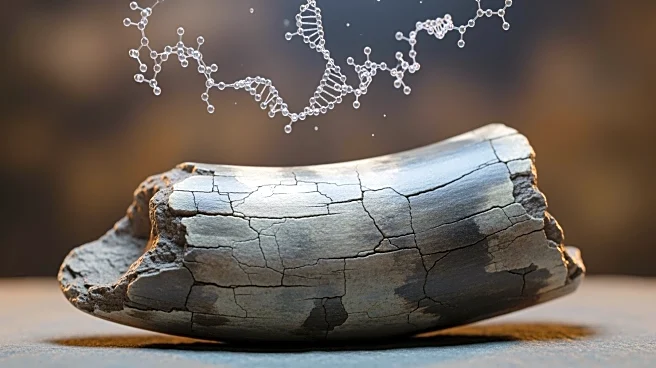What's Happening?
Recent research has uncovered the presence of non-visual photoreceptive neurons in sea urchin larvae, specifically in the anterior neuroectodermal region. These neurons, identified through single-cell
RNA sequencing, are primarily serotonergic and play a crucial role in larval swimming behaviors. The study utilized a gamma-secretase inhibitor to enhance neuronal capture, revealing two distinct clusters of serotonergic neurons. One cluster uniquely expressed the non-visual opsin gene Opn5L, which is linked to light-induced behavioral changes. Experiments showed that larvae exposed to continuous light exhibited sinking behavior, while those with Opn5L knockdown maintained floating. This suggests that Opn5L mediates light avoidance, particularly UV light, influencing larval swimming behavior.
Why It's Important?
The discovery of non-visual photoreceptive neurons in sea urchin larvae provides significant insights into the evolution of sensory systems in marine organisms. Understanding how these neurons influence swimming behavior can shed light on the mechanisms of light-driven behaviors such as diel vertical migration, which is crucial for marine ecosystems. The study highlights the evolutionary link between echinoderm and vertebrate neurons, suggesting that migratory mechanisms in neurons may be a shared trait among deuterostomes. This research could impact the study of nervous system development and the integration of sensory inputs into complex behaviors, potentially influencing marine biology and evolutionary studies.
What's Next?
Future research may focus on integrating these findings with studies on other opsins and their roles in marine organism behaviors. Understanding the full spectrum of light-driven swimming behaviors could lead to advancements in marine biology, particularly in the study of diel vertical migration. Additionally, exploring the evolutionary implications of these findings could provide deeper insights into the development of nervous systems across different species. Researchers may also investigate the potential applications of these discoveries in biotechnology and environmental monitoring.
Beyond the Headlines
The study of non-visual photoreceptive neurons in sea urchin larvae opens up discussions on the ethical and environmental implications of manipulating marine organisms for research. Understanding the evolutionary aspects of these neurons could lead to debates on the conservation of marine biodiversity and the impact of human activities on marine ecosystems. The research also highlights the importance of interdisciplinary approaches in studying complex biological systems, combining genetics, neuroscience, and marine biology.











